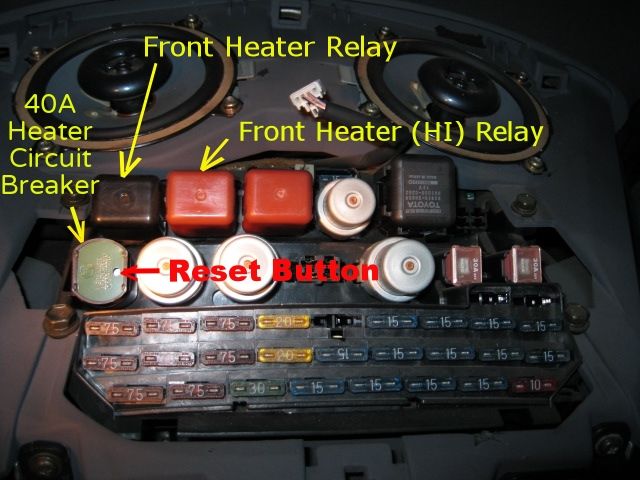
Originally Posted by
Jonny

It looks like I need to learn to read, eh? Especially the first paragraph of the first post!
I looked at the wiring diagram and when the switch is in high position it activates the "heater high relay" providing a separate no-resistance path to ground, effectively bypassing the whole resistor part of the deal. What I'm not so clear on is the "heater relay", but I believe that it is activated whenever the blower switch is at any setting except off, and sends current through the resistor to ground. The high setting and heater high relay just creates the other bypass in addition.
Since the new wiring seems to be related to the two relays I wonder if this is what they did....
i) solder the contacts together on the under side of the "heater relay" so that it is always closed.
ii) cut the original motor wire as the easiest way of disabling the original circuitry.
iii) run new wires from the relays to the motor so that the stratagem for high-only function comes to fruition.
The question remains why? Maybe there was an undiagnosed electrical gremlin unrelated to relays and resistors and this was the expedient way of getting at least some blower function. There must have been something unusual going on or you'd think they would have found the culprit component and just replaced it.
Did you test the relays, just to be sure about them, too (the heater relay especially)?
Re: the resistor terminal resistance values. They're really small. It surprised me how small they are. 1/2 an ohm between H and M2, 2 ohms between H and L. Maybe it's a meter sensitivity thing? Would have been nice if the manual gave an idea of the values one is meant to see, but it doesn't. It just shows you should be seeing some resistance. At least that's the way it is in the '93 manual I'm looking at.
Edit: I realize now that if the red wire in your first pic goes from the battery positive side of the heater relay to the positive side of the fan it would bypass the heater relay and create an always live motor just waiting for the heater high relay to be activated by the high switch setting. Basically since the original wires were cut the entire system may have been reduced to a simple circuit with an on/off switch, the switch high setting / heater high relay acting as that switch. A faulty heater relay would cause failure of all fan speeds and is beginning to look suspicious, but if that's the case someone went to a lot of trouble to avoid spending $25 for a new one. It still doesn't make sense. Sometimes though, I suppose, it doesn't have to.




 Reply With Quote
Reply With Quote

